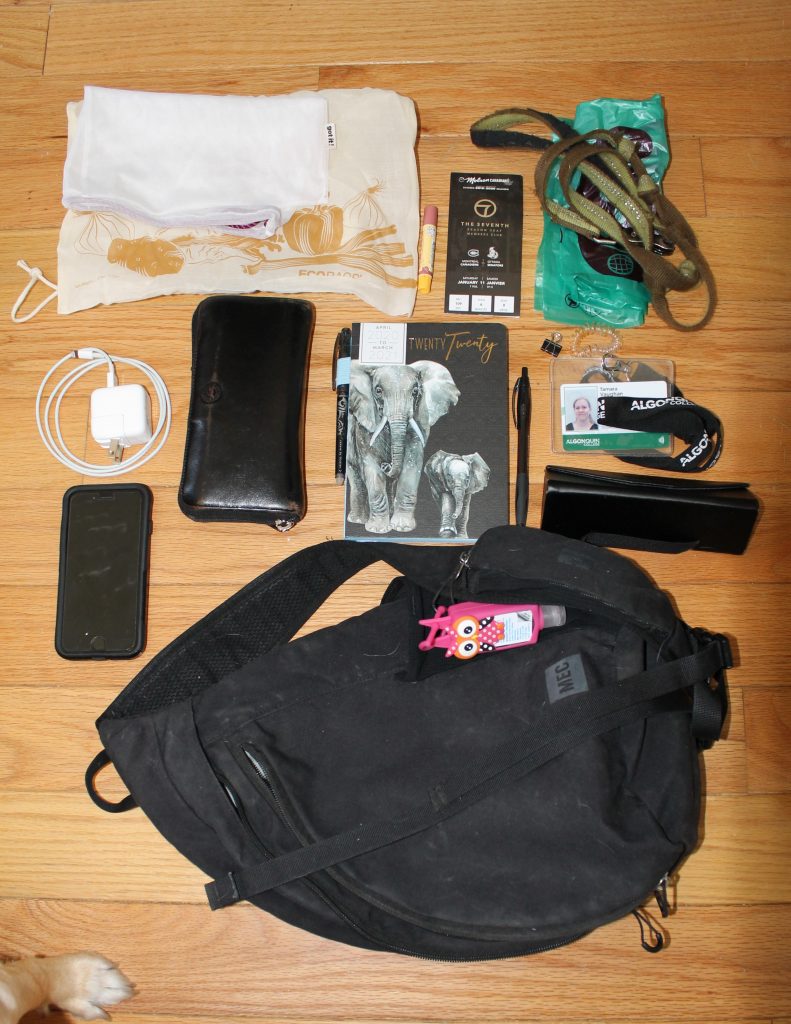For task #4 (potato print), I’ve chosen to link to Šárka Kubelíkova’s Task #4 -Potato Prints’ task. I reviewed a number of other posts about the potato printing process, but I returned to Šárka’s because of the contrast between her process and mine.
The potato print task, to me, was all about the process. Yes, we had to (hopefully) complete the task in the end, but the journey and process associated with this task is where the learning occurred for me. It allowed me to briefly step back in time and step inside the shoes of someone navigating a similar task, day in and day out, at some point in the past. I had a rough plan of how I would tackle the task (I’ve never tackled a potato before, but I can add that to my list of accomplishments, I suppose). After reviewing course material (and of course, forgetting one key video that would’ve saved me some time), I sketched out a design, practiced the lettering, grabbed my knife and started carving.
When I contrast my process and workflow to Šárka’s, however, I am struck by the precision with which Šárka describes her process and the methodical nature of her workflow as its described in her blog post. For me, Šárka’s choice of the word, Yoshi, conjures up images of Japanese gardens, silence and tranquility: quite the opposite of my carving experience. If you’ve read my post, you’ll know my two kids were right there with me, knee-deep in potatoes, paint and paintbrushes.
Differing Experiences and Course Design
As I near the end of my MET journey, I am trying to take more time to mull over the resources and tasks I’m assigned in each course. Why this article? Why this article at this point in the course? Why this task? And so, as I navigate my way through the assigned readings and tasks in ETEC 540, my approach is the same: take time to mull. I tend to complete the assigned readings/videos earlier in the week before attempting the corresponding task. Through this process, I am trying to make sense of the readings and their applicability to the task as well: Why have we been assigned this particular task in conjunction with particular readings or viewing(s) of videos? I also want to make connections between what I’m learning and what I want to learn (in addition to how I might apply what I’m learning to my career). I suppose if I was to describe my path through ETEC 540, I would suggest it’s a meandering one. I’m allowing myself time to think, absorb, and reflect; but I’m also allowing myself to have more fun with this course. Why not? Learning new technology and applying the skills I am learning in ETEC 540 does not mean that it must be pure academe all the time, does it? Surely not! So what caught my attention when reviewing Šárka’s Potato Print task was its conciseness, its precision, and its detail. From the type of paint and potato selected to the length of time it took to print one letter; nothing seemed to be missing! No event unrecorded. It reminded me of my undergraduate years as a Microbiology student, first in Maine and then in Ontario. Šárka’s potato print task was similar to experiments I’ve performed in years past: there was a defined and reproducible method presented to the reader and observations, results and a conclusion that were easy to identify. In contrasting our two posts, what I really enjoy is the freedom ingrained in this task that allows us (students) to take the assignment in whatever direction feels right for us. The constraints of this course, to me, aren’t nearly as rigid as that of other courses: I was able to create a potato print with my kids on the weekend during a pandemic because it was a task in my course! There is nothing quite like taking what I’ve been reading and putting it to good use (in this case, with a potato and some paint). The fact that two such divergent experiences can be produced as a result of this task supports the importance of open-ended tasks and the possible final products students can produce if given permission to respond in a way that is meaningful to the student.
I was curious and read through some of Šárka’s other posts: Šárka also has a scientific background. What’s interesting though, is the divergence between our two perspectives when completing this task. I would align Šárka’s methodology closer to that of a traditional/natural scientist, whereas with my method could safely be compared to that of a field biologist (or kindergarten teacher-whatever makes more sense to you). What I love about our two methods though, is the fact that we both brought our backgrounds (or schema) with us when completing the task.
The Authoring Tool: WordPress
At first when I was looking for posts, I clicked directly on student posts from the links provided to us through Canvas. However, once I started exploring different student’s blog spaces I spent more time exploring the sites themselves. Šárka’s is unique because it was the only site that (thus far) that required me to first enter details such as my email address in order to be permitted to make a comment. Though it adds more time when commenting, had this site been open to the public, it would certainly help keep track of those wishing to comment (which is especially helpful if someone makes an inappropriate comment!). I decided to keep my comments open for ease-of-use; I think I would continue to leave the comments open even if my site was available to the public since WordPress allows you to view and approve a comment prior to it becoming visible on one’s site.
I also chose to add a menu at the top of my WordPress site to help users navigate from one post to another, or from one post back to the main page, or to the linking assignment. I created categories to divvy up the content as well and to keep different types of posts separated so they’ll be easy to find. I found Šárka’s site a bit more confusing to navigate through. Her first four tasks were categorized under one particular category, however, her most recent posts fell within the Uncategorized section of her course which made the site more challenging to follow. The use of the course title, ETEC 540 also wasn’t intuitive to me: I didn’t realize that was where all the tasks would be organized.
Images and Text
Šárka’s use of images to support the text in her post is quite helpful in contributing to her storytelling process. In particular, I found it helpful to see the various iterations of the stamped word, Yoshi, as Šárka experimented with paint and the amount of pressure applied to the potato. Similar to the early image use suggested in Bolter’s (2001) Chapter 4 reading, Šárka’s images seem to be surrounded and kept in place by text; that is, the story being told within her blog post was told primarily through text, while images were used to support and enhance the story. (This may also link back to the scientific process in which Šárka engaged throughout the potato task: the photos were part of her observations and results’ section).
Contrasting Šárka’s use of images to my own, my post contained just the one image of my duplicated print of the word, “Point”. As I was working my way through this task, my thoughts were on the process and how I would describe this process primarily using text. Trying to reproduce the manual printing method as much as possible (and as close to the monks referred to in Harris’ (2018) How it Began podcast), the emphasis in my post was on the final product I produced rather than the method I took. However, perhaps that was a mistake? Would it have been better to have included the many missteps I took in order to achieve the final copy of my potato print and record everything for all to see? Or, was it better to focus on the final product and discuss the process using only text? I suppose the answer depends on the viewer’s perspective and what it is they are looking for. When I look at Šárka’s site and the inclusion of images, I am able to see the entire crafting process behind creating one word and attempting to duplicate that word as best as possible: the reader is an active participant in Šárka’s creative process. With my post, however, the image is as flawless as I could hope to achieve, but the text was used to describe the process: the reader becomes more of a passive participant.
Literacies
Both sites make use of traditional literacy in the sense that one must be able to read the text in order to follow the post; and both posts, of course, rely on print-based literacy (we couldn’t have completed the task without knowing how to create prints on our potatoes!).
One must also have a certain level of competency with digital literacy in order to be able to navigate either site; however, I think one might need to be perhaps a bit more digitally literate to be able to find all the components on Šárka’s site. Where we certainly diverge, is our reliance on images in our posts. Through Šárka’s increased use of images for task #4, visual literacy becomes more important on her site than mine: her images are helping to tell her story. Though I captured my print as a photo, it is still a text-based ‘image’ and so again, I think it still falls within the realm of traditional and print-based literacy.
One must also have a certain level of competency with digital literacy in order to be able to navigate either site; however, I think one might need to be perhaps a bit more digitally literate to be able to find all the components on Šárka’s site. Where we certainly diverge, is our reliance on images in our posts. Through Šárka’s increased use of images for task #4, visual literacy becomes more important on her site than mine: her images are helping to tell her story. Though I captured my print as a photo, it is still a text-based ‘image’ and so again, I think it still falls within the realm of traditional and print-based literacy.
References
Bolter, Jay David. (2001). Writing space: Computers, hypertext, and the remediation of print [2nd edition]. Mahwah, NJ: Lawrence Erlbaum.
Harris, B. (2018). The Printed Book: Opening the Floodgates of Knowledge – How It Began. https://howitbegan.com/episodes/the-printed-book/



